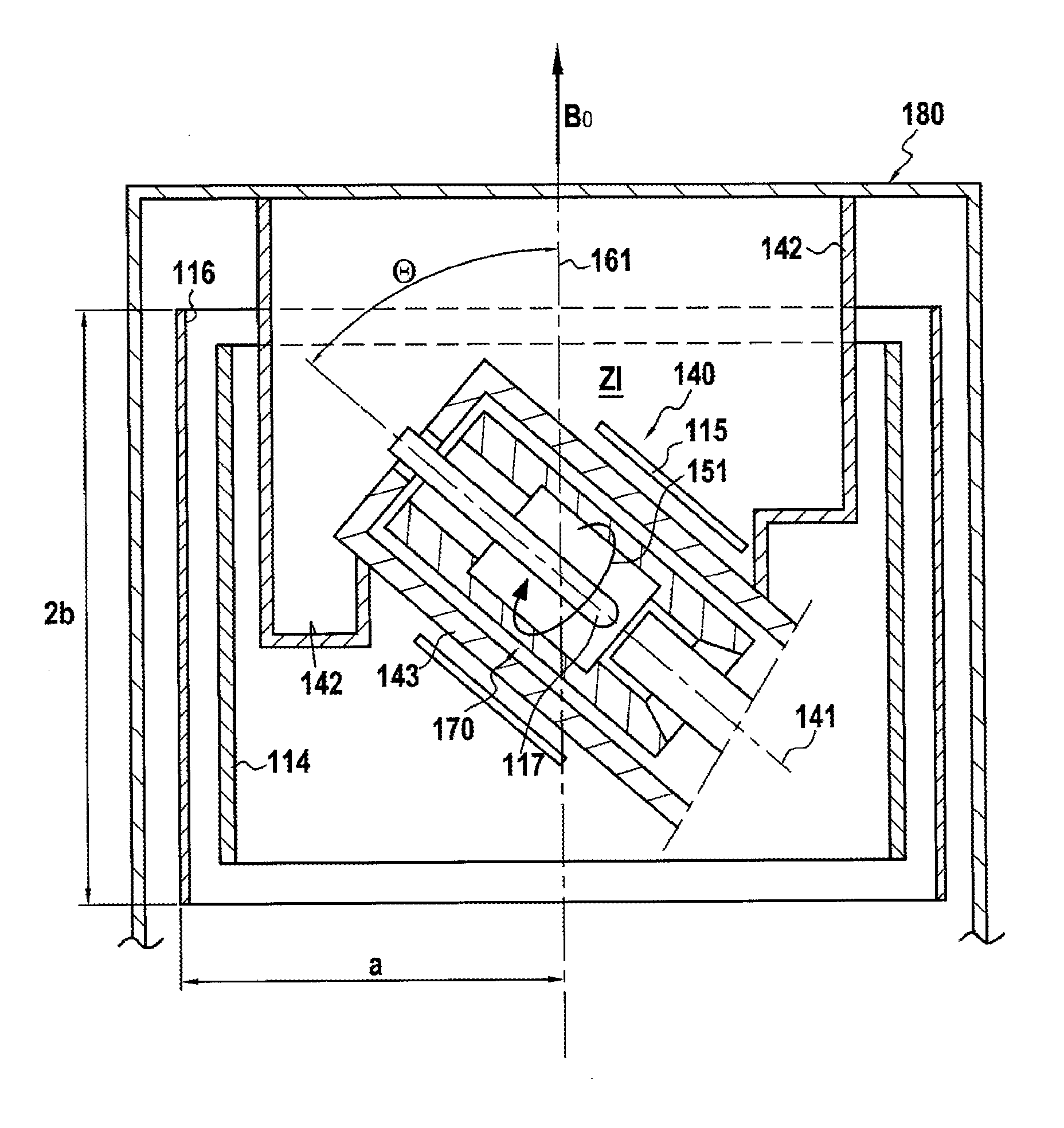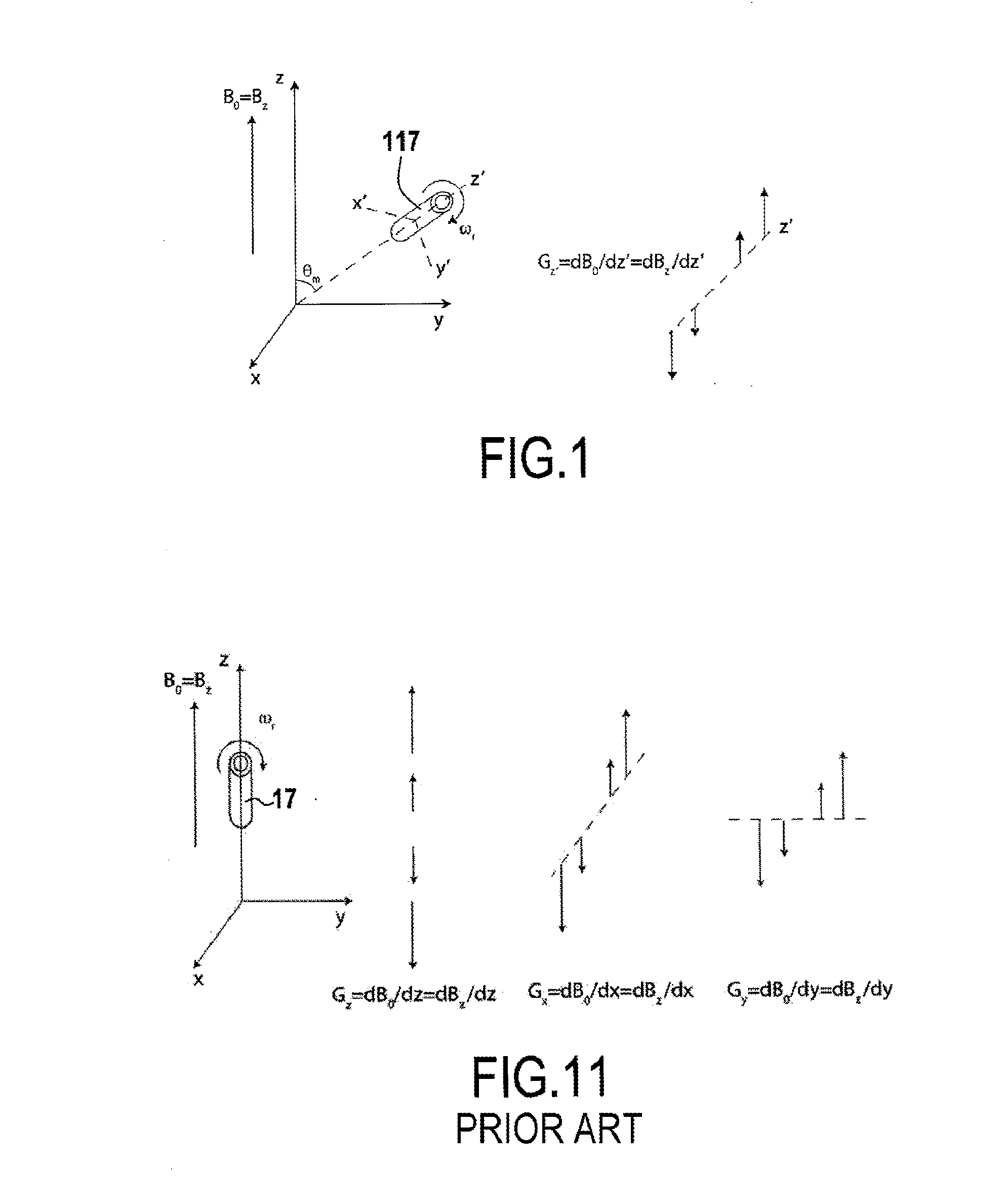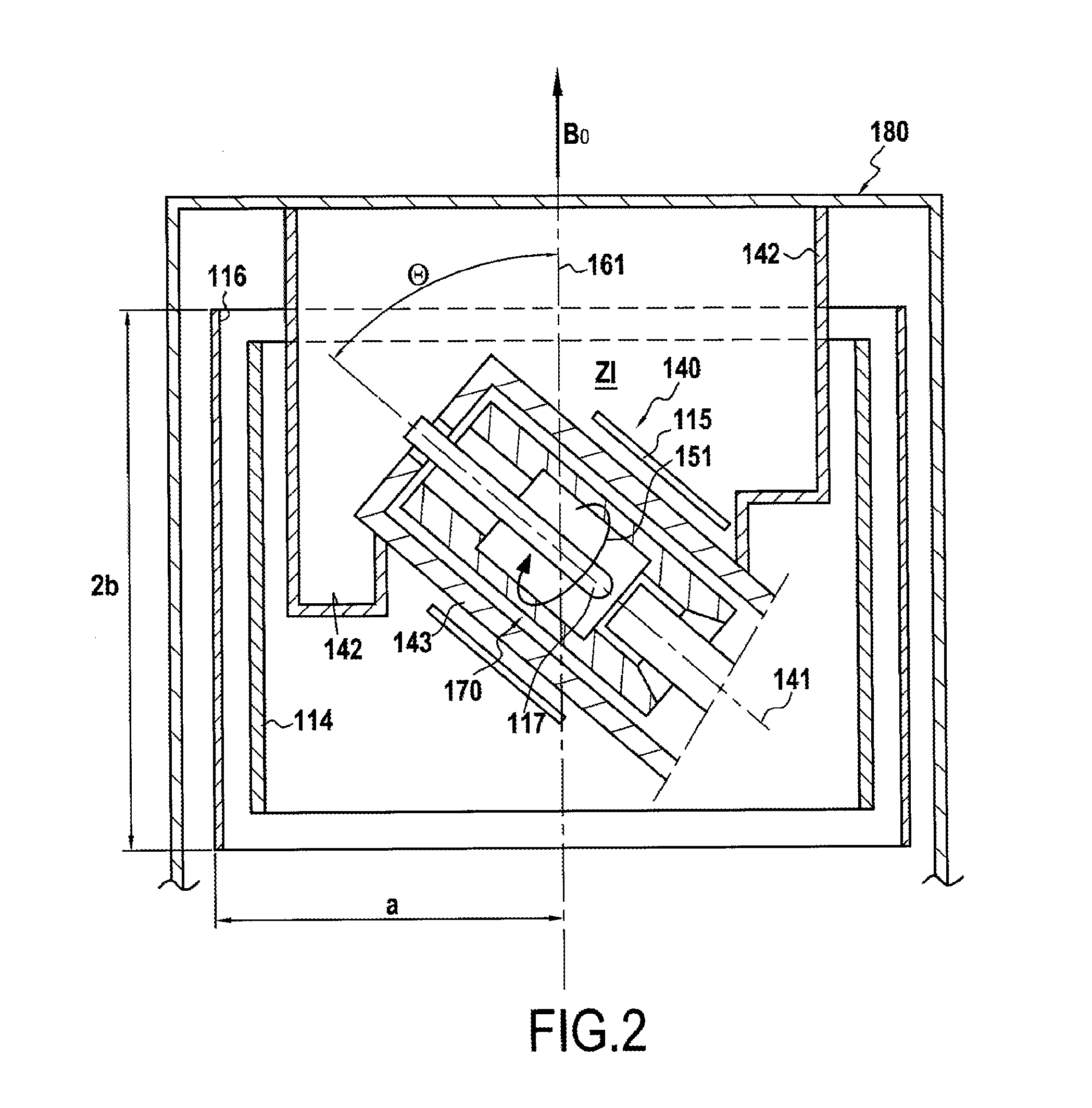Method and Device for Magnetic Field Correction for an NMR Machine
- Summary
- Abstract
- Description
- Claims
- Application Information
AI Technical Summary
Benefits of technology
Problems solved by technology
Method used
Image
Examples
Embodiment Construction
[0054]According to the present invention, magnetic field correction coils or “shim” coils are proposed for taking account respectively of the axial terms Z′1, Z′2, and Z′3, in preferred manner in a spherical harmonic development (SHD), the correction device including said coils being designed specifically for application to a magnetic resonance imaging system having a sample that is inclined relative to the direction of the main magnetic field by being oriented at an angle θ0 that is preferably equal to the magic angle (54.7°).
[0055]These coils are always applied on a cylinder that is coaxial with the hole in the magnet creating the main field, and they may have the same dimensions as sheaths containing correction coils (referred to as “shim sheaths”) that are already in service, thereby enabling them to be used directly in existing installations. They serve to correct directly the terms of the SHD that are associated with the inclined reference frame. This greatly reduces the work ...
PUM
 Login to View More
Login to View More Abstract
Description
Claims
Application Information
 Login to View More
Login to View More - R&D
- Intellectual Property
- Life Sciences
- Materials
- Tech Scout
- Unparalleled Data Quality
- Higher Quality Content
- 60% Fewer Hallucinations
Browse by: Latest US Patents, China's latest patents, Technical Efficacy Thesaurus, Application Domain, Technology Topic, Popular Technical Reports.
© 2025 PatSnap. All rights reserved.Legal|Privacy policy|Modern Slavery Act Transparency Statement|Sitemap|About US| Contact US: help@patsnap.com



